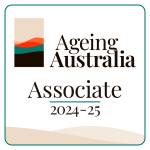Australia’s New Aged Care Standards: A Complete 2025 Guide

Strengthened Aged Care Quality Standards: Transforming Care for Older Australians
Australia’s aged care system is undergoing a profound transformation, with the introduction of strengthened Aged Care Quality Standards at its core. These new standards, set to come into effect on July 1, 2025, are designed to ensure safe, quality, and respectful care for older Australians. This comprehensive overhaul is not just a policy change; it’s a paradigm shift in how we approach the care and dignity of our elderly population.
The Journey to Improved Aged Care
A Royal Commission’s Urgent Call
The path to these strengthened standards began with the Royal Commission into Aged Care Quality and Safety in 2021. This landmark inquiry shed light on systemic issues within the aged care sector and made a compelling case for urgent reform. Among its key recommendations was a call for a comprehensive review and enhancement of the Aged Care Quality Standards.
Legislative Milestones
The Australian government responded swiftly to the Commission’s findings. On November 25, 2024, the Federal Parliament passed the Aged Care Bill 2024, marking a pivotal moment in aged care reform. Just a week later, on December 2, 2024, the new Aged Care Act 2024 was enacted, setting the stage for a complete overhaul of the aged care system.
The Dawn of a New Era
Come July 1, 2025, the new Aged Care Act 2024 will take effect, replacing the outdated Aged Care Act 1997 and related legislation. This date marks the beginning of a new chapter in Australian aged care, with the strengthened Quality Standards at its heart.
Key Components of the Strengthened Quality Standards
The new standards are not merely an update; they represent a fundamental shift in approach to aged care. Let’s delve into the key components that make these standards transformative:
1. Person-Centered Approach
At the core of the new standards is a commitment to person-centered care. This approach recognizes that each older person has unique needs, preferences, and life experiences. It emphasizes:
- Individualized care plans tailored to personal needs and goals
- Respect for cultural, linguistic, and spiritual diversity
- Empowerment of older people in decision-making about their care
2. Specific Focus Areas
The strengthened standards address critical areas that were previously underemphasized:
Dementia Care:
With the increasing prevalence of dementia, the new standards incorporate specific guidelines for providing appropriate care to individuals living with cognitive impairments. This includes:
- Training staff in dementia-specific care techniques
- Creating dementia-friendly environments
- Implementing person-centered approaches to manage behavioral symptoms
Diversity:
Recognizing Australia’s multicultural society, the standards emphasize culturally appropriate care. This includes:
- Providing language support and interpreter services
- Respecting cultural and religious practices in care delivery
- Offering culturally diverse meal options
Governance:
The standards set clear expectations for organizational governance, ensuring that aged care providers have robust systems in place for:
- Risk management
- Continuous quality improvement
- Transparent decision-making processes
Food and Nutrition:
Acknowledging the critical role of nutrition in health and well-being, the standards outline requirements for:
- Nutritionally balanced meal plans
- Accommodation of dietary restrictions and preferences
- Regular assessments of nutritional needs
Clinical Care:
The standards raise the bar for clinical care in aged care settings, emphasizing:
- Evidence-based practice
- Regular health assessments
- Coordination with other healthcare providers
3. Risk-Based Regulation Approach
The Aged Care Quality and Safety Commission (ACQSC) is adopting a risk-based approach to regulation under the new standards. This strategic shift aims to:
- Focus resources on non-compliant providers
- Support and recognize providers striving for compliance
- Utilize data and intelligence for early risk identification
This approach allows for more efficient use of regulatory resources and encourages a culture of continuous improvement among providers.
4. Workforce Support Initiatives
Recognizing the critical role of the aged care workforce, the new standards are accompanied by initiatives to support staffing challenges:
- Tools and guidance for meeting care minute targets
- Support for providers in areas with workforce shortages
- Emphasis on staff training and professional development
5. Financial and Prudential Compliance
The standards introduce more stringent financial and prudential requirements:
- Providers must demonstrate ongoing financial viability
- Stricter management of refundable deposits and bonds
- Regular financial reporting to the ACQSC
6. Enhanced Worker Screening
To ensure the safety and well-being of older Australians, the new Act introduces:
- A new Aged Care Worker Screening Check
- More comprehensive background checks for employees in risk-assessed roles
Impact on the Aged Care Industry
The introduction of these strengthened standards is set to have far-reaching effects on the aged care sector:
Shift Towards Rights-Based Care
The new standards firmly establish a rights-based framework for aged care delivery. This shift ensures that the rights and dignity of older people are at the forefront of all care decisions and practices.
Increased Transparency and Accountability
Providers will be required to demonstrate compliance with more comprehensive and specific standards. This increased accountability is expected to drive improvements in care quality and organizational practices.
Industry-Wide Transformation
The strengthened standards will necessitate significant changes in how aged care services are delivered, managed, and monitored. This may lead to:
- Consolidation within the industry as some providers struggle to meet new requirements
- Innovation in care delivery models and technologies
- Increased investment in staff training and development
Implementing the New Standards: A Guide for Providers
For aged care providers, transitioning to the new standards requires careful planning and execution. Here’s a step-by-step guide to help navigate this change:
1. Conduct a Gap Analysis
- Compare current practices against the new standards
- Identify areas requiring improvement or change
- Prioritize actions based on the level of gap and potential impact
2. Develop a Comprehensive Implementation Plan
- Set clear objectives and timelines
- Assign responsibilities to key team members
- Allocate resources for necessary changes
3. Invest in Staff Training and Development
- Conduct training sessions on new standards and practices
- Foster a culture of continuous learning and improvement
- Consider partnering with education providers for specialized training
4. Establish Robust Quality Management Systems
- Implement or upgrade systems for monitoring and reporting
- Develop processes for continuous quality improvement
- Ensure all staff understand their role in maintaining quality standards
5. Engage with Residents and Families
- Communicate changes and improvements to residents and their families
- Seek feedback and involve them in care planning processes
- Establish mechanisms for ongoing communication and feedback
Frequently Asked Questions
What are the main differences between the new and old standards?
The new standards are more comprehensive, with specific focus areas such as dementia care, diversity, and clinical care. They also emphasize a person-centered approach and include stricter financial and prudential requirements.
How will the new standards affect smaller aged care providers?
Smaller providers may face challenges in meeting the more comprehensive requirements. However, the ACQSC is committed to providing support and resources to help all providers transition to the new standards.
What resources are available to help providers transition to the new standards?
The ACQSC offers online learning modules, workshops, and guidance materials. Additionally, industry associations provide support and resources tailored to their members’ needs.
How will compliance with the new standards be measured and enforced?
The ACQSC will use a risk-based approach, focusing on providers who fail to comply while supporting those striving for compliance. This includes regular audits, data analysis, and targeted interventions.
What role do residents and their families play in the new standards?
The new standards emphasize resident and family involvement in care planning and decision-making. Providers are expected to actively engage with residents and families, seeking their input and feedback on care delivery.
Challenges and Solutions
While the strengthened standards promise significant improvements in aged care, they also present challenges for providers. Here are some key challenges and potential solutions:
Challenge: Adapting to More Comprehensive Standards
Solution: The ACQSC is implementing a phased approach to allow providers time to adapt. They are also offering targeted support and resources to help providers understand and implement the new requirements.
Challenge: Meeting Staffing Requirements in Areas with Shortages
Solution: Providers can explore innovative recruitment strategies, such as partnerships with education institutions, and leverage technology to optimize workforce management and care delivery.
Challenge: Ensuring Financial Viability While Improving Quality
Solution: Efficient resource management, coupled with government support programs, can help providers balance financial sustainability with quality improvements. Providers should also explore innovative care models that can deliver high-quality care more efficiently.
Ethical Considerations and Best Practices
The strengthened standards bring ethical considerations to the forefront of aged care:
Balancing Safety Measures with Residents’ Autonomy
Providers must navigate the delicate balance between ensuring resident safety and respecting their right to make choices about their care and daily life.
Ensuring Cultural Sensitivity in Care Delivery
With an increased focus on diversity, providers need to develop culturally competent care practices that respect and accommodate various cultural backgrounds.
Maintaining Transparency in Financial Management
The new financial and prudential requirements demand greater transparency, raising ethical considerations around the management of residents’ funds and organizational finances.
Fostering a Culture of Continuous Improvement
Providers should view the new standards not as a compliance checklist, but as an opportunity to continuously enhance the quality of care and resident experience.
Success Stories and Testimonials
While the full implementation of the new standards is still on the horizon, early pilot projects have shown promising results:
A pilot project involving 40 providers tested the draft strengthened Quality Standards. Feedback from participating providers was overwhelmingly positive, with many noting that the audit process was more transparent and easier to understand. One provider commented, “The new standards really push us to think deeply about how we’re delivering care and how we can improve. It’s challenging, but it’s making us better.”
Tools, Equipment, and Resources
To support the implementation of the new standards, providers can leverage various tools and resources:
- Rostering Software: Advanced rostering tools can help providers meet care minute targets and optimize staff allocation.
- Quality Management Systems: Comprehensive software solutions can assist in monitoring compliance, managing incidents, and driving continuous improvement.
- ACQSC Online Learning Modules: The Commission offers a range of online courses to help providers and staff understand and implement the new standards.
- Industry Association Resources: Many industry associations offer guidelines, templates, and support materials tailored to the new standards.
Conclusion
The strengthened Aged Care Quality Standards represent a significant leap forward in ensuring high-quality, person-centered care for older Australians. While the transition may present challenges, it also offers an unprecedented opportunity to elevate the standard of aged care across the country.
As we move towards the implementation date of July 1, 2025, providers, staff, residents, and families all have a role to play in embracing these changes. By working together, we can create an aged care system that truly respects, values, and supports older Australians in living their best lives.
The future of aged care in Australia under these new standards is one of increased dignity, respect, and quality of life for our older population. It’s a future worth striving for, and one that will benefit not just current aged care residents, but generations to come.
Additional Resources
For those seeking more information or support in navigating these changes, the following resources are invaluable:
- Aged Care Quality and Safety Commission website
- Department of Health and Aged Care resources
- Industry association guidelines and support materials (specific to your relevant associations)
As we embark on this transformative journey in aged care, let’s embrace the opportunity to set new benchmarks for quality, compassion, and excellence in caring for older Australians.








